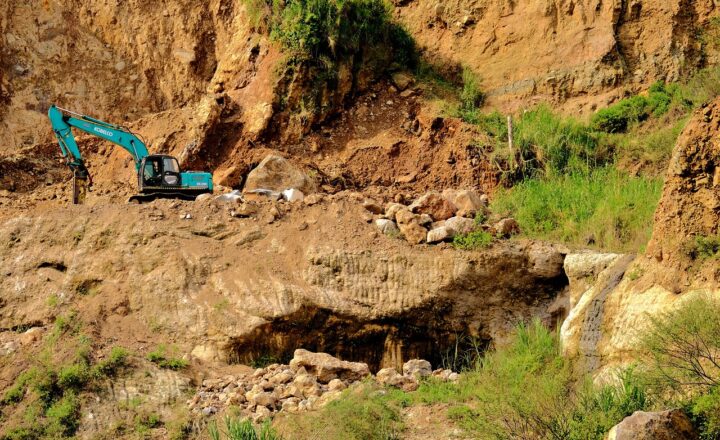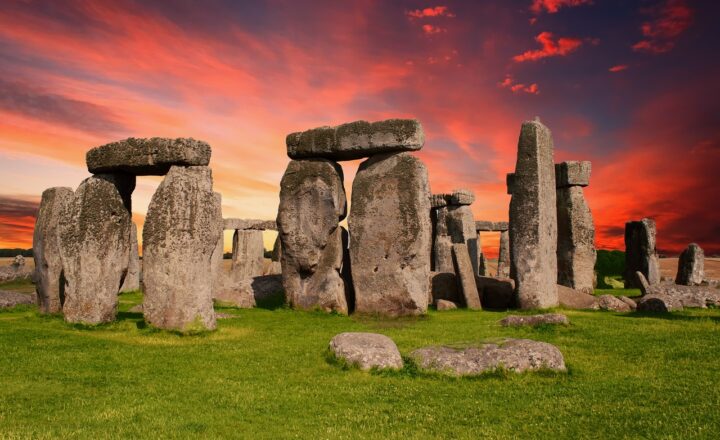The Most Mysterious and Enigmatic Statues That Continue to Puzzle Historians and Archaeologists
November 17, 2024

Throughout history, cultures around the world have crafted countless statues, many of which carry deep symbolic meanings and historical significance. However, some statues remain shrouded in mystery, leaving historians and archaeologists to ponder their true purpose, origin, and significance. From ancient monolithic structures to delicate figurines, these enigmatic statues continue to fascinate and baffle us. In this article, we will explore some of the most mysterious statues from around the globe, examining their intriguing features and the unsolved questions that surround them.
### 1. The Moai of Easter Island
Located on the remote Easter Island in the Pacific Ocean, the Moai are among the most iconic statues in the world. Carved from volcanic rock between 1400 and 1650 CE, these massive monolithic statues depict the heads of ancestors and were created by the Rapa Nui people. The most famous of these statues are the 887 Moai that dot the island, with the tallest standing at an impressive 10 meters (33 feet) tall and weighing up to 82 tons.
The mystery surrounding the Moai lies in both their construction and transportation. It is believed that the Rapa Nui people used a sophisticated system of ropes and manpower to move these colossal statues across the island, but the exact techniques remain a topic of debate among archaeologists. Additionally, the reason for their construction is also enigmatic. Many theories have been proposed, including their role in ancestor worship, but no definitive conclusions have been reached.
### 2. The Terracotta Army
Discovered in 1974 near the tomb of Qin Shi Huang, the first Emperor of China, the Terracotta Army comprises thousands of life-sized statues of soldiers, archers, and horses, thought to guard the emperor in the afterlife. While the army was discovered intact, the full extent of the site remains to be explored, and new statues are still being unearthed.
Each figure is unique, showcasing a high degree of craftsmanship, but the most puzzling aspect remains the purpose of this monumental burial complex. Why did Qin Shi Huang go to such extraordinary lengths to construct this lifelike army? The discovery raises further questions about the emperor’s beliefs and the nature of ancient Chinese funeral practices.
### 3. The Lion of Sintang
Discovered in Indonesia, the Lion of Sintang is a stone statue resembling a lion, which dates back to an unknown period in ancient Indonesian history. What makes this statue particularly intriguing is its ambiguous origins and the lack of historical records pointing to its creators and purpose.
Archaeological analysis places it in the 7th to 10th century CE, yet some believe it could be older. Its distinctive features — a lion with human characteristics — have led to debates about its symbolism, suggesting it may represent a fusion of local beliefs and influences from Hindu and Buddhist cultures. However, without concrete evidence, the Lion of Sintang remains one of history’s great enigmas.
### 4. The Olmec Colossal Heads
The Olmec civilization, often considered the first major civilization in Mexico, is known for its striking colossal heads, which can weigh up to 20 tons and reach heights of nearly 3 meters (10 feet). Carved from basalt between 900 and 400 BCE, these heads are thought to represent Olmec rulers or important figures, but their exact identity remains elusive.
Interestingly, the locations of these heads vary widely, leading to questions about the transportation methods employed by the Olmec and the purposes of the monuments. Some scholars have speculated that the heads served as political symbols or markers, while others suggest they may have had religious significance. The true meaning behind these colossal creations continues to challenge our understanding of Olmec culture.
### 5. The Venus of Willendorf
Discovered in Austria in 1908, the Venus of Willendorf is a small limestone statuette, roughly 11.1 cm (4.4 inches) tall, that is thought to represent a fertility figure. Dating back to around 28,000–25,000 BCE, the figure is characterized by exaggerated female features, including large breasts and hips.
The ambiguity surrounding the Venus of Willendorf lies in its purpose and meaning. Was it a fertility idol, a depiction of health, or a form of art without any intention? Despite its widespread recognition, little conclusively ties it to ancient societal practices, leaving historians and archaeologists to theorize.
### 6. The Statues of Easter Island’s Ahu
In addition to the famous Moai, Easter Island features Ahu, the stone platforms on which these statues stand. Some Ahu are adorned with ceremonial stone structures that hold further intrigue. The Ahu’s designs reflect deeply-rooted beliefs and cultural practices of the Rapa Nui, but many questions remain unanswered.
What types of rituals occurred on these platforms? What was the significance of their locations? Archaeologists continue to study the Ahu in hopes of uncovering connections that reveal more about the island’s inhabitants and their religious practices.
### 7. The Finial Statues of the Giant Buddha
The Giant Buddha of Leshan in China is a colossal statue that stands 71 meters (233 feet) tall. Carved into the cliff face during the Tang Dynasty, it faces the confluence of three rivers. Surrounding this impressive figure are several smaller statues, known as Finial statues, which are less well-known yet equally mysterious.
Persistent questions surround these smaller statues, including who commissioned them and what their individual roles were supposed to represent in relation to the Giant Buddha. These statues remain largely unexplored, leaving researchers eager to delve deeper into their significance, as they may offer critical insights into the religious and cultural history of this site.
### 8. The Nias Island Statues
The island of Nias, located off the western coast of Sumatra, Indonesia, is home to numerous stone statues known as “Dahos”. Standing at heights of up to 3 meters (10 feet), these statues depict various anthropomorphic figures and are believed to date back as far as 2000 BCE.
What sets the Dahos apart is their cultural significance to the local Nias people, remaining resilient amid the encroachment of modernity. However, little is known about why these figures were created, their precise meanings, and what role they played in ancient Nias society. Although they are now regarded as symbols of local heritage, the origins of the Dahos still pose questions that intrigue researchers.
### Conclusion
The statues discussed above represent just a small sampling of the countless enigmatic sculptures that populate our world. Each one has a story, a history, and a collection of questions that remain unanswered. As researchers continue to investigate these statues, new discoveries and theories may emerge, shedding light on the cultures that created them and the mysteries they hold.
Statues are more than mere stone or clay; they are echoes of civilizations long gone, reminding us of our shared human experience and the mysteries that still beckon us to explore.
Whether through ongoing archaeological efforts, advances in technology, or simply the passage of time, the narratives surrounding these enigmatic statues may one day be revealed, enhancing our understanding of the past and our place within it.







